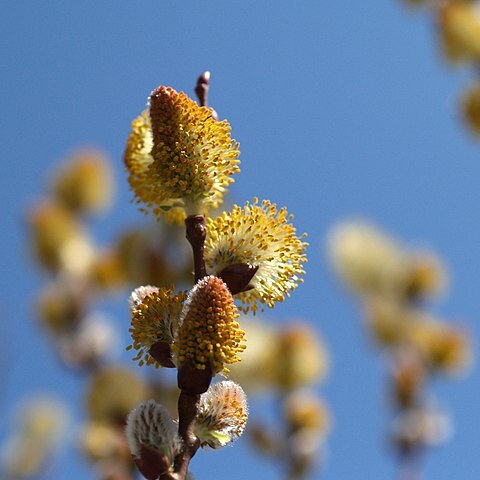Shrub to c. 2 m high, forming dense thickets; bark smooth. Shoots white-villous when young, not brittle, lacking striations below bark. Buds densely silky hairy. Petiole 5-10 mm long. Lamina 5-10 × 1-3 cm, elliptic or lanceolate-elliptic, greyish and densely clothed in appressed hairs beneath, eventually glabrous above excluding midrib, not bitter to taste, glandular-serrulate; lateral veins often > 15, close and prominent; angle between midrib and lateral veins < 45°; apex acute. Stipules to 1.5 cm long, obliquely oblong-ovate, hairy, at least below, glandular-serrulate, persistent. Catkins ♂, appearing before lvs, subsessile, 3-4 cm long, broad-cylindric, ± erect; rachis hairy. Bracts c. 2.5 mm long, rhombic to obovate, black in upper part, densely silky hairy, acuminate. Gland 1, c. 1 mm long, ± linear. Stamen 1, glabrous.
A shrub. It grows 3-4.5 m high and spreads 3-4.5 m wide. The leaves are oblong and 10 cm long. The flower catkins appear before the leaves. The male catkins are red and later orange, then yellow. The female catkins are silky grey.

